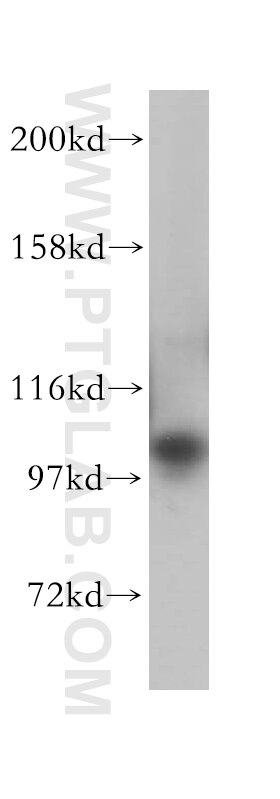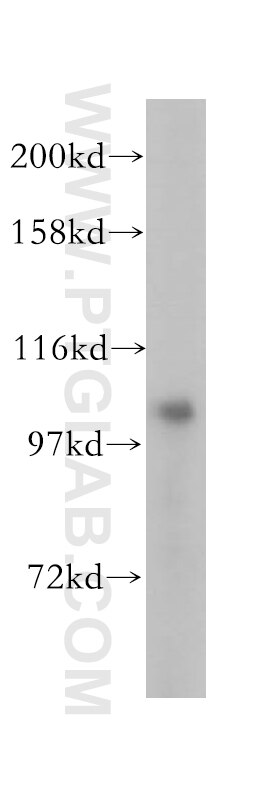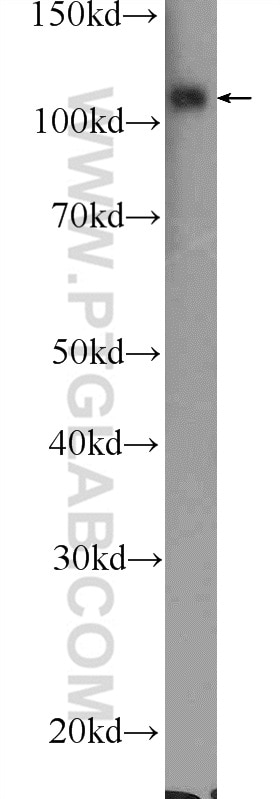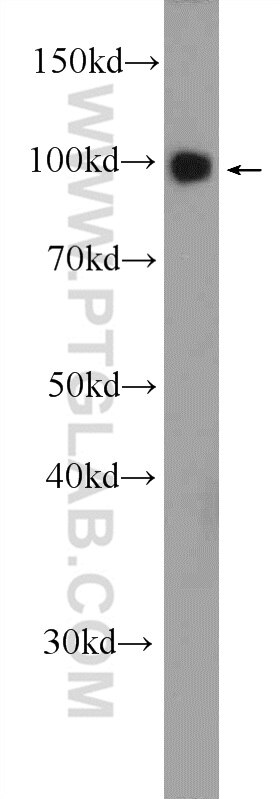- Featured Product
- KD/KO Validated
OCRL Polyklonaler Antikörper
OCRL Polyklonal Antikörper für WB, IP, IHC, ELISA
Wirt / Isotyp
Kaninchen / IgG
Getestete Reaktivität
human, Maus, Ratte
Anwendung
WB, IHC, IF, IP, ELISA
Konjugation
Unkonjugiert
Kat-Nr. : 17695-1-AP
Synonyme
Geprüfte Anwendungen
| Erfolgreiche Detektion in WB | HeLa-Zellen, HEK-293-Zellen, Maushirngewebe, Rattenhirngewebe, SH-SY5Y-Zellen |
| Erfolgreiche IP | HeLa-Zellen |
| Erfolgreiche Detektion in IHC | Mausnierengewebe Hinweis: Antigendemaskierung mit TE-Puffer pH 9,0 empfohlen. (*) Wahlweise kann die Antigendemaskierung auch mit Citratpuffer pH 6,0 erfolgen. |
Empfohlene Verdünnung
| Anwendung | Verdünnung |
|---|---|
| Western Blot (WB) | WB : 1:500-1:2000 |
| Immunpräzipitation (IP) | IP : 0.5-4.0 ug for 1.0-3.0 mg of total protein lysate |
| Immunhistochemie (IHC) | IHC : 1:100-1:400 |
| It is recommended that this reagent should be titrated in each testing system to obtain optimal results. | |
| Sample-dependent, check data in validation data gallery | |
Veröffentlichte Anwendungen
| KD/KO | See 3 publications below |
| WB | See 5 publications below |
| IHC | See 1 publications below |
| IF | See 2 publications below |
Produktinformation
17695-1-AP bindet in WB, IHC, IF, IP, ELISA OCRL und zeigt Reaktivität mit human, Maus, Ratten
| Getestete Reaktivität | human, Maus, Ratte |
| In Publikationen genannte Reaktivität | human, Maus |
| Wirt / Isotyp | Kaninchen / IgG |
| Klonalität | Polyklonal |
| Typ | Antikörper |
| Immunogen | OCRL fusion protein Ag11900 |
| Vollständiger Name | oculocerebrorenal syndrome of Lowe |
| Berechnetes Molekulargewicht | 893 aa, 103 kDa |
| Beobachtetes Molekulargewicht | 105 kDa |
| GenBank-Zugangsnummer | BC094726 |
| Gene symbol | OCRL |
| Gene ID (NCBI) | 4952 |
| Konjugation | Unkonjugiert |
| Form | Liquid |
| Reinigungsmethode | Antigen-Affinitätsreinigung |
| Lagerungspuffer | PBS with 0.02% sodium azide and 50% glycerol |
| Lagerungsbedingungen | Bei -20°C lagern. Nach dem Versand ein Jahr lang stabil Aliquotieren ist bei -20oC Lagerung nicht notwendig. 20ul Größen enthalten 0,1% BSA. |
Hintergrundinformationen
OCRL is also named as INPP5F, OCRL1 and belongs to the 5-phosphatase gene family and that Lowe syndrome represents an inborn error of inositol phosphate metabolism(PMID: 9430698).The protein product of the gene that when mutated is responsible for Lowe syndrome, or oculocerebrorenal syndrome (OCRL), is an inositol polyphosphate 5-phosphatase.It may function in lysosomal membrane trafficking by regulating the specific pool of phosphatidylinositol 4,5-bisphosphate that is associated with lysosomes.It has 2 isoforms produced by alternative splicing.Defects in OCRL are the cause of Lowe oculocerebrorenal syndrome (OCRL) and Dent disease type 2 (DD2).This antibody is specific to OCRL.
Protokolle
| PRODUKTSPEZIFISCHE PROTOKOLLE | |
|---|---|
| WB protocol for OCRL antibody 17695-1-AP | Protokoll herunterladen |
| IHC protocol for OCRL antibody 17695-1-AP | Protokoll herunterladenl |
| IP protocol for OCRL antibody 17695-1-AP | Protokoll herunterladen |
| STANDARD-PROTOKOLLE | |
|---|---|
| Klicken Sie hier, um unsere Standardprotokolle anzuzeigen |
Publikationen
| Species | Application | Title |
|---|---|---|
Mol Autism Modeling the neuropsychiatric manifestations of Lowe syndrome using induced pluripotent stem cells: defective F-actin polymerization and WAVE-1 expression in neuronal cells.
| ||
Nephrol Dial Transplant Identification of novel OCRL isoforms associated with phenotypic differences between Dent disease-2 and Lowe syndrome. | ||
J Neurodev Disord Transcriptome analysis of neural progenitor cells derived from Lowe syndrome induced pluripotent stem cells: identification of candidate genes for the neurodevelopmental and eye manifestations.
| ||
BMC Med Genomics Novel pathogenic OCRL mutations and genotype-phenotype analysis of Chinese children affected by oculocerebrorenal syndrome: two cases and a literature review | ||
Cell Death Dis Rab35 and glucocorticoids regulate APP and BACE1 trafficking to modulate Aβ production.
| ||
Cell Mol Life Sci Class I PI3Ks activate stretch-induced autophagy in trabecular meshwork cells |









